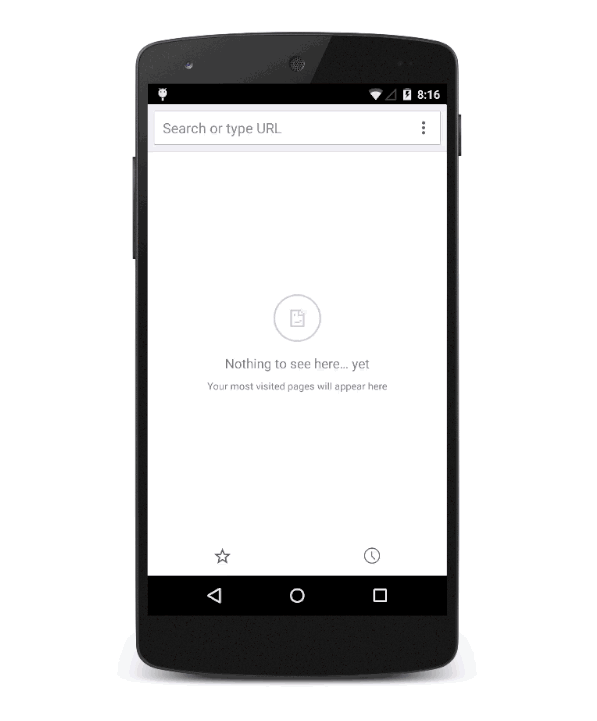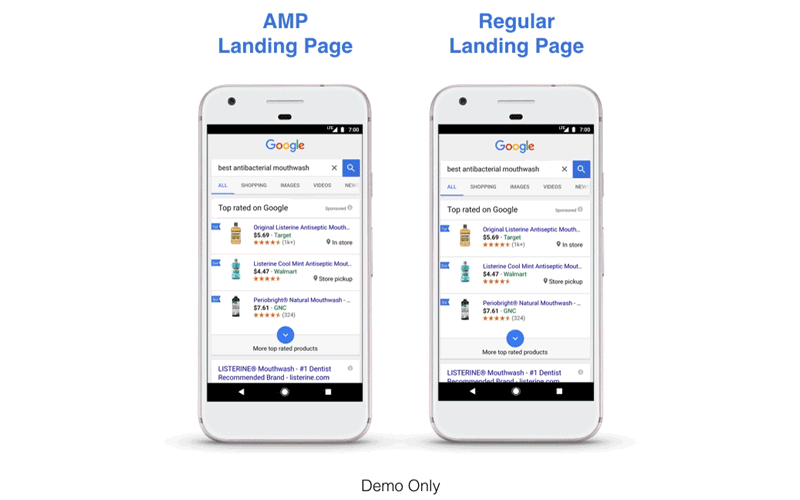12 Web Development Trends That Will Dominate Upcoming Years

Web Design & Development
According to a survey done by the Netcraft, there are over 1.8 billion websites on the Internet – out of which less than 200 million websites are active. What’s more interesting is that the count is continuously increasing at a rate of about 2 or 3 websites per second, contributing to around 200 websites per minute.
To make your business website stand out from the crowd of over a 100 million active websites, not only you should keep up with all the latest and futuristic web development trends and technologies but also you need to incorporate them into your custom web development plan at the earliest.
To help you stay ahead of the game, being a top-tier mobile app and web development company, we have researched and gathered the most credible and precise predictions about the web development trends for upcoming years. Let’s go through them one by one!
Game-Shifting Web Development Trends for 2020 and Beyond
#1: Progressive Web Apps (PWAs)
When it comes to delivering users the best of the web and the best of a native mobile app, Progressive Web Apps work as the finest option. Owing to their ability to provide users with a blazing-fast native app-like experience within a browser, many top companies and brands are now switching to PWAs and witnessing an exponential increment in conversions and user engagement.

Since mobile applications are continuously losing their appeal due to their oversaturated market, progressive web apps emerge as an excellent alternative to native mobile apps. Even if PWAs are not a new concept, they will dominate as one of the prominent web development trends in upcoming years.
Also Read : NATIVE VS. PROGRESSIVE WEB APPS (PWAS): DIVING INTO THE KEY DIFFERENCES
#2: Single Page Applications (SPAs)
Another web development trend that will rule in 2020 and upcoming years is Single Page Websites and Applications built with an advanced JavaScript framework like Angular. As the name itself explains, the single-page design is a long webpage without any complex navigation or deep menu, working perfectly on both desktop and mobile devices.

The biggest advantages of Single Page Websites and Applications are simplicity and speed, which are the two vital things today’s users crave for. Since the number of mobile users is ever-increasing, SPAs will be one among popular web development trends in future.
#3: Push Notifications for Websites
Gone are the days when Push Notifications were used only by mobile apps to increase user engagement. Today, almost every website is taking advantage of them to notify users of any changes occurred on the website, like a new blog post, new offers, special discounts, etc.

It would not be an exaggeration to say that Push Notifications are replacing email newsletters in terms of usability, accessibility and user experience. Since they’re taking user engagement to a whole new level, we can expect more businesses to adopt this web development trend in the coming years.
#4: Chatbots, AI and Machine Learning
This researchful list of web development trends wouldn’t be complete if we didn’t mention today’s sophisticated Chatbots powered by Artificial Intelligence, Machine Learning, and Neural Schema Mechanisms. As a matter of the fact, 69% of consumers today prefer Chatbots to quickly contact a brand.

Additionally, by the end of 2020, over 85% of customer interactions will occur without any human interference and 80% of businesses will integrate some sort of Chatbot Automation – making Chatbots one of the most popular web development trends in the near future.
#5: Blockchain
Blockchain, the same technology powering Bitcoin and other cryptocurrencies, is definitely the next big paradigm shift when it comes to providing the highest level of security to protect any data. Addressing several critical issues of our current web, such as vulnerability and inefficiency, Blockchain has now become a new web development trend among the businesses.

According to a research, more than half of the world’s big corporations either actively consider or deploy Blockchain, and about two-thirds of the companies are planning to implement the Blockchain technology by the end of this year. Considering its incessant growth and popularity, we can say Blockchain is a web development trend that is going to revolutionize the web forever.
#6: Motion UI
Yes, today’s web users have got tired of boring static images, crazy GIFs and Flash-based advertisements. They now want something that’s simple, intuitive yet interactive, letting them find quickly find what they’re actually looking for. A captivating Motion UI, a fastest growing web development trend, works perfectly in such a case.

Image Credit: Microsoft
Given the fact that human attention span is continuously shrinking from year to year, you’ll definitely see the rapid adoption of Motion User Interfaces as a prevalent web development trend in 2020 and beyond. After all, there is no better way to grab users’ attention and keep them engaged than with a sophisticated Motion UI.
#7: Voice Search Optimization
This web development trend does not come as a surprise. Digital voice assistants such as Google Assistant, Siri, Cortana, and Alexa are now an integral part of our everyday life, encouraging more and more web developers to incorporate voice capabilities into their websites and applications.
A recent report from PwC reveals that on average, 60% of people between the age group 18-50+ use voice devices and assistants at least once a day, and that’s probably because searching with voice is 3.7x faster than typing.

Image Source: Backlinko.com
Gartner predicts that30% of web browsing sessions will be done without a screen, with 50% of all searches performed by voice by 2020, according to ComScore. Here it’s also worth mentioning that the number of digital voice assistants is projected to reach 8 billion by 2023.
Taking into consideration all these facts and figures, we can say that voice search optimization is a web development trend you should adopt as early as possible to stay ahead of the competition in the coming years.
#8: Augmented and Virtual Reality
If there is anything that can take browsing to the next level, it is AR and VR. While these two game-changing technologies are making their way into almost every industry, web development is no longer an exception.
Due to the rapid growth in the speed of the Internet, the world’s top companies like Google, YouTube, and Microsoft are already taking advantage of AR and VR to enable users to view 360° images and videos. YouTube VR is a perfect example of these technologies in action.
Additionally, given the increasing adoption of AR and VR in online space, now WordPress has also started supporting the embedding of 360° photos and VR content via a variety of 360° view plugins.
Means, if you have a WordPress-powered eCommerce site, AR and VR can prove to be quite helpful in facilitating your customers to virtually try out different products.
Since the market size of AR and VR is expected to reach around $215 billion by 2021, this web development trend will continue to grow in the years to come.

Image Source: BusinessInsider.com
#9: Mobile-First Development
With as much as 54% of the Internet traffic today coming from mobile and tablet devices, it is no surprise that web development in the future will be more about small mobile screens than horizontally-oriented desktop devices.
Also, Google is emphasizing mobile-first indexing more than ever before. It now uses the mobile version of a website to determine the quality and ranking of a web page in search results.
Mobile-first development is a concept when you first develop a website or application with mobile devices in mind and then scale it up to work smoothly on larger screen devices, such as laptops and desktops.
Since nearly 73% of Internet traffic is expected to come from smartphones by 2025, mobile-first web development is a trend well worth paying close attention to.
#10: Headless Development
The term ‘Headless’ refers to the software architecture that functions without a front-end.
Also known as an API-first solution or Static or Serverless approach, the Headless architecture decouples the front-end from the back-end, allowing you to improve the underperforming areas of your websites and applications with a more tailored development.
Although the Headless architecture has been around for several years, it came into prominence after the addition of the REST API to WordPress Core in 2016. Consequently, you can now use WordPress as a Headless CMS.
Another advanced implementation of this relatively new technique can be seen in the form of Headless eCommerce, which opens up a whole new world of customization and personalization for you.
With the growing list of CMSes and eCommerce platforms supporting the Headless architecture, this web development trend will continue to prevail in the coming years.
#11: Accelerated Mobile Pages (AMP)
Introduced by Google to enhance the browsing experience on mobile devices, Accelerated Mobile Pages (AMPs) are stripped-down HTML copies of your existing web pages, which load instantaneously.
AMP pages load 11 times faster than non-AMP pages, leading to a dramatic increase in conversion and click-through rates of websites.

Image Source: Google.com
Although you can implement the AMP approach on any website, it works perfectly for blogs and news websites.
Sinсe Google loves speedy websites, and the demand for even faster mobile browsing experiences is continually growing, we can expect AMPs to be a dominating web development trend in the time to come.
#12: Multi-experience Development
The web development started from smartphones, tablets, and laptops is now expanding its wings to Smart TVs, Smart Watches, Smart Voice Assistant Speakers, and Smart Vehicles.
All these devices run through websites and apps, presenting an ideal combination of hardware, software, and the Internet.
The multi-experience approach allows users to use your website or app wherever they want to: on a smartwatch, on a TV, in a car, etc. The primary purpose here is to make the website or app look good and function well across a variety of interconnected IoT devices.
As Gartner forecasts that, by 2021, 25 billion connected IoT devices will be in use, you can gain a notable competitive edge by adopting this web development trend at the earliest.
If you have any query related to web development, feel free to contact us.


